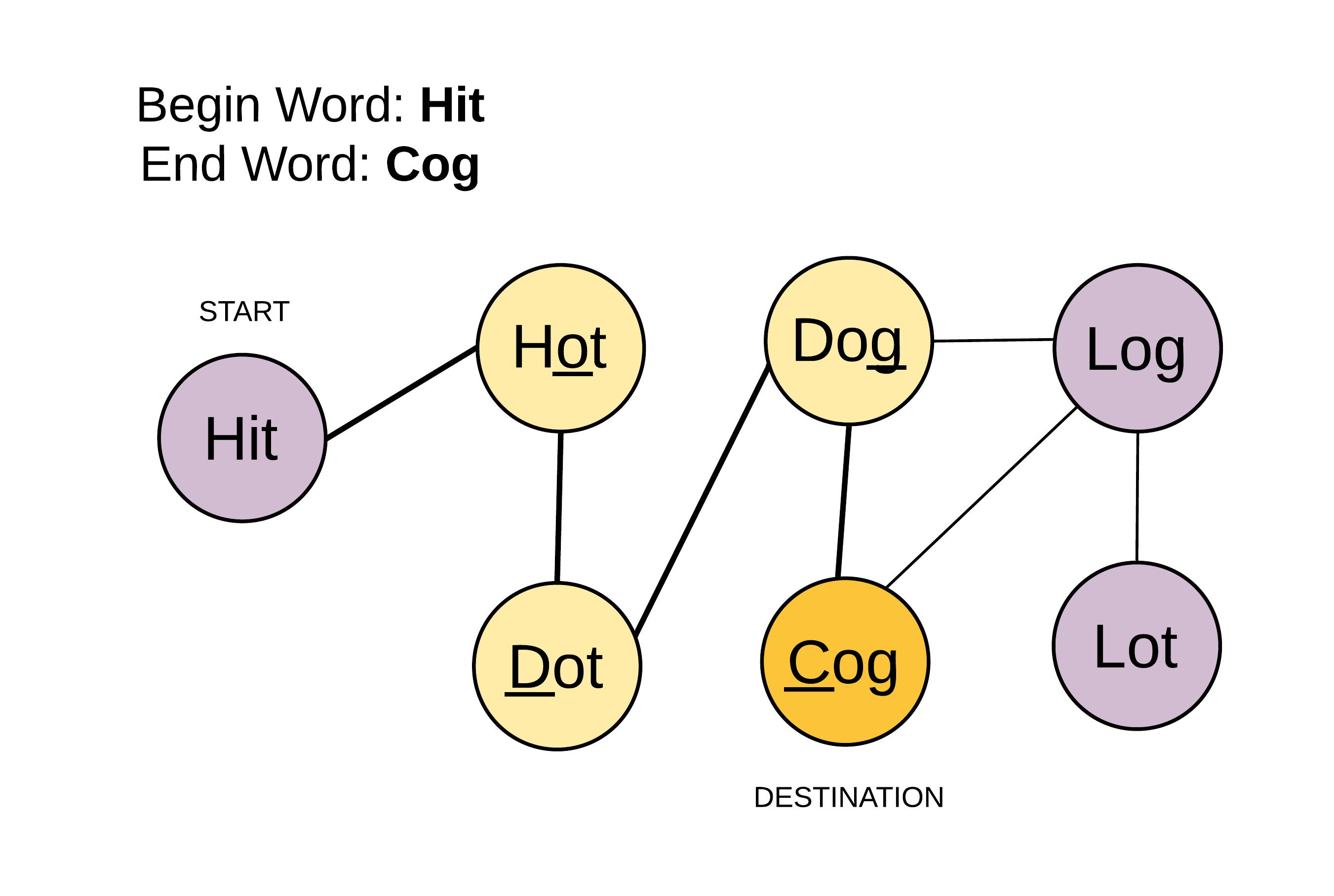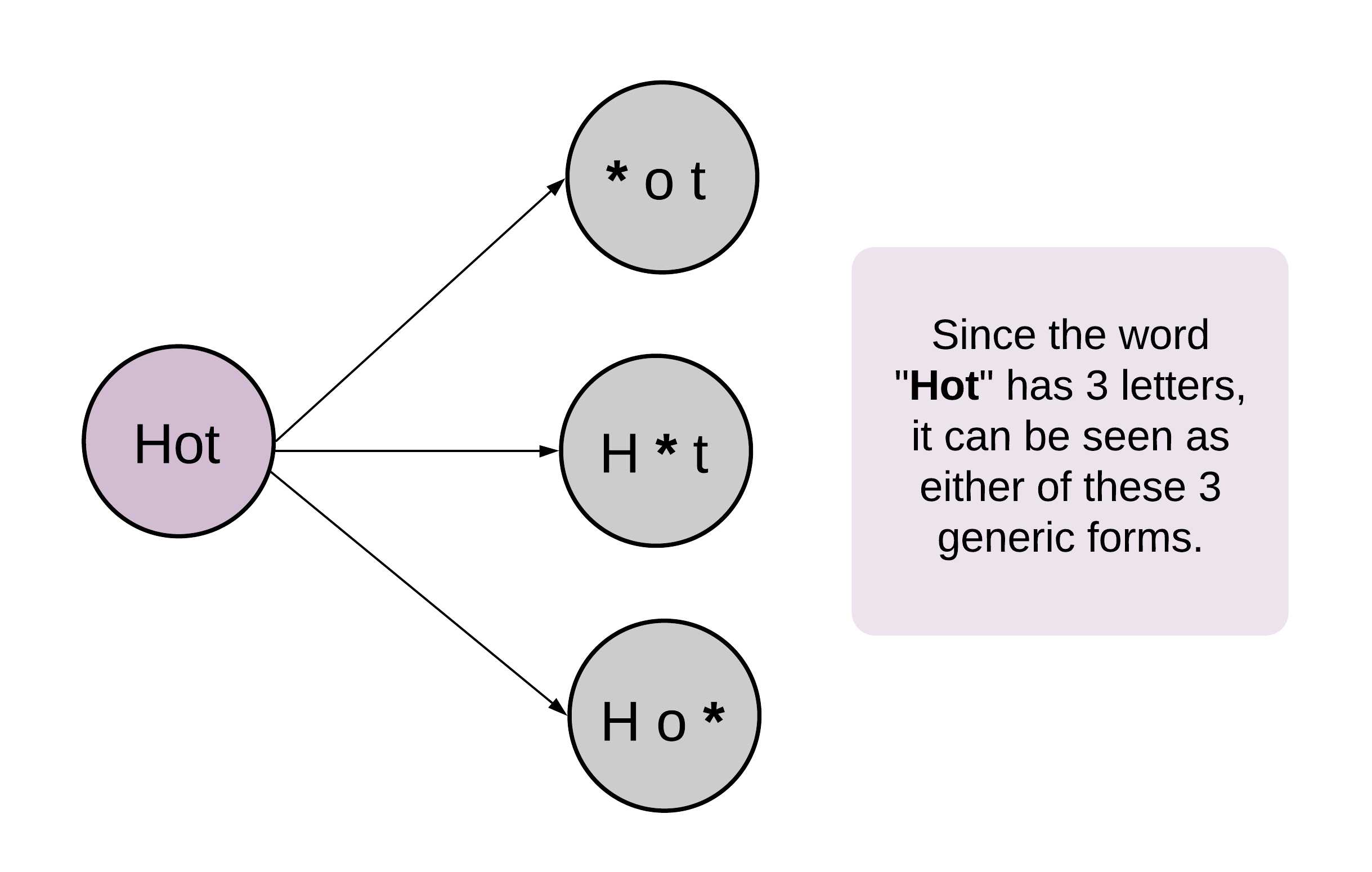标签:输入 vector str 访问 htm 单词 而且 return 出现
给定两个单词(beginWord?和 endWord)和一个字典,找到从?beginWord 到?endWord 的最短转换序列的长度。转换需遵循如下规则:
说明:
示例:
输入:
beginWord = "hit",
endWord = "cog",
wordList = ["hot","dot","dog","lot","log","cog"]
输出: 5

解释: 一个最短转换序列是 "hit" -> "hot" -> "dot" -> "dog" -> "cog",
返回它的长度 5。
题目链接: https://leetcode-cn.com/problems/word-ladder/
题目中要求每次转换只能改变一个字母,所以我们可以把这个问题看做一个搜索问题,搜索从源单词到目标单词的一条路径。

现在有一个问题需要解决,就是我们如何判断两个单词是相邻的?例如,hit 和 hot 只有一个字母不同,是相邻的。我们每次改变单词的一个字母可以提取出单词的“模式”,例如,我们每次将“hit”中的一个字母改为“*”可以得到:*it、h*t 和 hi*。

而对于 hot,我们进行同样的操作也可以得到 3 个模式:*ot、h*t 和 ho*。我们发现,hit 和 hot 的模式中都出现了 h*t,这说明 hit 可以通过替换一个字母转为 hot,这意味着 hit 和 hot 是相邻的。
知道了如何定义相邻,我们就可以使用 bfs 求解了。步骤如下:
unordered_map<string, vector<string>> patterns),例如 patterns[‘h*t‘]={"hot","hit"} 的含义是 h*t 可以由 hot 和 hit 转换而来,hot 和 hit 是相邻的;queue<pair<string, int>> q),标记 beginWord 已经被访问过;代码如下:
class Solution {
public:
int ladderLength(string beginWord, string endWord, vector<string>& wordList) {
unordered_map<string, vector<string>> patterns;
for(auto word:wordList){
for(int i=0; i<word.size(); i++){
string temp = word;
temp[i] = ‘*‘;
patterns[temp].push_back(word);
}
}
queue<pair<string, int>> q;
unordered_map<string, bool> visit; // 标记单词是否访问过
q.push(make_pair(beginWord, 1));
visit[beginWord] = true;
while(!q.empty()){
pair<string, int> pr = q.front(); q.pop();
string curString = pr.first;
int cnt = pr.second;
for(int i=0; i<curString.size(); i++){
string temp = curString;
temp[i] = ‘*‘;
if(patterns.find(temp)!=patterns.end()){
vector<string> candis = patterns[temp];
for(string candi:candis){
if(candi==endWord) return cnt+1;
if(!visit[candi]){
q.push(make_pair(candi, cnt+1));
visit[candi] =true;
}
}
}
}
}
return 0;
}
};
其实,我们也可以不使用 patterns 来记录模式,而是直接将当前单词 curString 和字典 wordDict 中的单词逐个比对,判断不同字母的个数是否等于 1,如果等于 1 并且没访问过就入队。这种方法相对会更容易被想到,而且代码也会更简洁,但是会超时。代码如下:
class Solution {
public:
int ladderLength(string beginWord, string endWord, vector<string>& wordList) {
queue<pair<string, int>> q;
unordered_map<string, bool> visit; // 标记单词是否访问过
q.push(make_pair(beginWord, 1));
visit[beginWord] = true;
while(!q.empty()){
pair<string, int> pr = q.front(); q.pop();
string curString = pr.first;
int cnt = pr.second;
for(auto word:wordList){
if(visit[word]) continue;
int diffCnt = 0;
for(int j=0; j<word.size(); j++){
if(curString[j]!=word[j]) diffCnt++;
}
if(diffCnt==1 && !visit[word]){
if(word==endWord) return cnt+1;
q.push(make_pair(word, cnt+1));
visit[word] = true;
}
}
}
return 0;
}
};
// 超时
标签:输入 vector str 访问 htm 单词 而且 return 出现
原文地址:https://www.cnblogs.com/flix/p/13287469.html